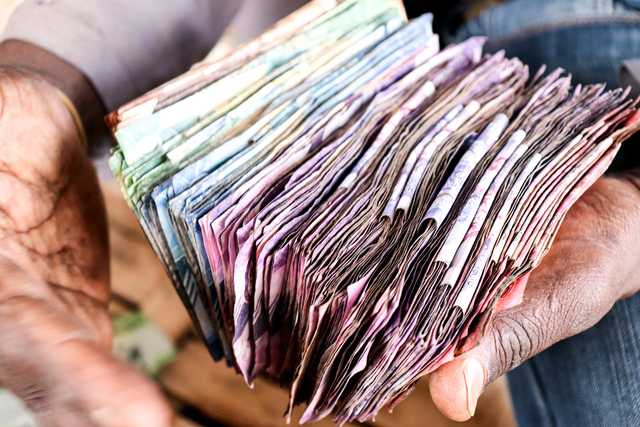[ad_1]
Economy
Kenya growth slows for the fifth consecutive quarter
Monday January 02 2023
A trader at Muthurwa market counts money after the day’s sale. Expansion in economic activity slowed by nearly half to 4.7 percent in the third quarter ended September 2022. FILE PHOTO | NMG
Kenya’s economic growth slowed for the fifth consecutive quarter on the back of below-average rainfall, elevated inflationary pressures and August election angst, the statistics agency reported on Friday.
The Kenya National Bureau of Statistics said expansion in economic activity slowed by nearly half to 4.7 percent in the third quarter ended September from 9.3 percent in a similar period last year.
The growth in the gross domestic product (GDP) — a measure of national economic output — in the review period was also slower than 5.2 percent in the second quarter this year, 6.8 percent (first quarter of 2022), 7.4 percent (fourth quarter of 2021) and 9.3 percent (third quarter of 2021).
Prolonged dry weather conditions and high cost of inputs hurt agricultural production, the country’s mainstay economic activity, the KNBS reported, while runaway inflation and weaker shilling eroded consumer purchasing power and reduced demand for goods and services.
Farming activities — which account for more than a fifth of Kenya’s GDP— contracted 0.6 percent compared with a marginal growth of 0.6 percent in similar period in 2021.
Read: Why bulk of Kenyans did not feel the 7.5 percent GDP growth
“The slowdown in performance of the sector was mainly attributed to unfavourable weather conditions that prevailed in first three quarters of 2022. The decline was reflected in vegetable exports and milk intake by processors that declined by 26.1 percent and 10.7 percent, respectively during the quarter under review,” the state-owned statistician wrote in the quarterly GDP report.
“The sector’s performance was cushioned from a steeper contraction by improved production in fruits, coffee and cane.”
The expansion in economic activity was further dragged by higher inflation — a gauge for cost of living over 12 months — averaged 8.7 percent in the July-September compared with 6.7 percent in the corresponding period a year earlier.
This was majorly driven by increased cost of food and fuel that followed Russian invasion of Ukraine, exacerbating disruptions in global supply chains that were yet to recover from Covid-19 lockdowns.
The Central Bank of Kenya, primarily tasked with stabilising prices, increased benchmark interest rates to 8.25 percent in the last month of the quarter from 7.5 percent to manage expectations on further rise in the cost of living measure.
The shilling also depreciated 9.4 percent against the US dollar in the review period to exchange at an average of 119.40 units, the KNBS says.
Growth in output for manufacturing, the sector that had earlier in the year complained of unrelenting global supply chain disruptions and difficulties accessing adequate dollars to pay suppliers abroad, slowed sharply to 2.4 percent from 10.2 percent in the similar quarter last year.
Read: More consumer pain as the shilling hits new historic low
The KNBS said growth for manufacturing was partly hit by a 14.7 percent drop in cement production to 2,302.7 metric tonnes, but was largely supported by increased production of sugar, coffee processing and assembly of motor vehicles.
Other key sectors that reported output decline during the review period include construction, which softened to 4.3 percent from 6.7 percent partly on slowdown in major infrastructural projects ahead of August polls and transportation dropping to 4.8 from 14.2 percent on expensive fuels.
Accommodation and food service activities —whose real value added to the economy is yet to hit pre-pandemic levels—grew 22.9 percent compared with 127.5 percent while the enabler ICT grew 4.6 percent compared with 4.1 percent the year before.
“Activity in the (hospitality) sector remained resilient during the electioneering period to record improved performance in the quarter under review,” KNBS said. “The visitor arrivals through the two major airports increased by 44.6 per cent from 217,873 visitors in the third quarter of 2021 to 315,112 visitors in the quarter under review.”
→ [email protected]
[ad_2]
Source link



